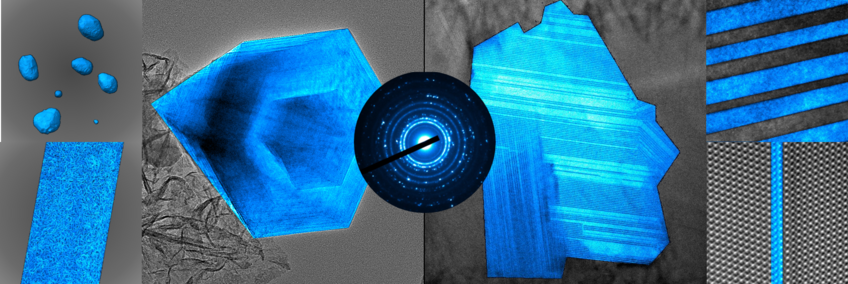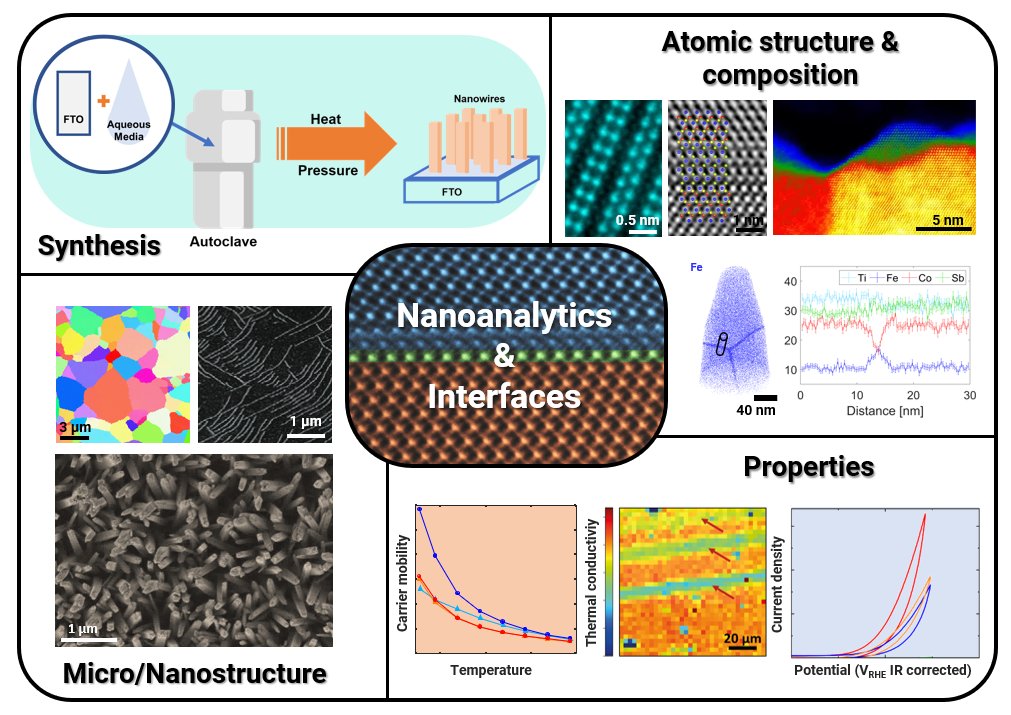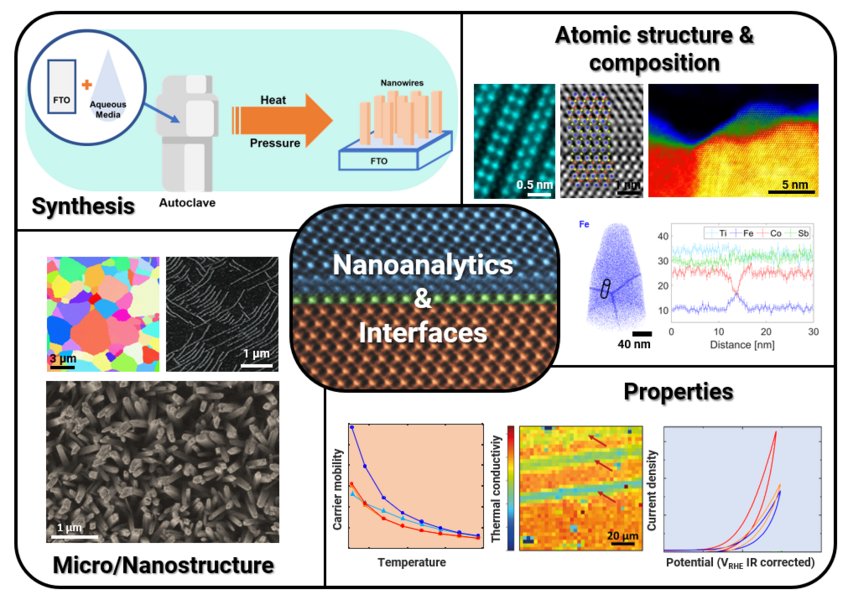
Nanoanalytics and Interfaces
The main research field of the independent research group "Nanoanalytics and Interfaces" is the in-depth characterization of materials for renewable energy application and hydrogen economy. State-of-the-art aberration corrected (scanning) transmission electron microscopy ((S)TEM) and its analytical methods such as electron energy loss spectroscopy (EELS) are applied to obtain information on the atomic arrangement and chemical composition of the materials down to the atomic scale. Dynamic processes are analyzed with in-situ heating and biasing STEM as well as liquid cell microscopy. A strong focus is laid on crystal defects such as interfaces or grain boundaries and on the effect of nanostructuring. The results are correlated to the synthesis conditions and used to determine structure-properties relationships. In addition, strategies are developed to improve functional properties and increase the stability of the materials of interest. The investigated material systems find applications in (photo)catalysis, fuel cells, (photo)electrochemistry, or thermoelectric devices. In addition, thin films used for metal contacts and as protective layers are studied.
In consequence of our society’s growing energy needs and the increasing environmental pollution, alternative cost-efficient and environmentally-friendly energy concepts are needed. Our group is actively involved in this field by designing and optimizing materials for the whole value chain of the hydrogen technology. This starts with (photo)electro-catalytic active materials, which are used to generate green hydrogen either by light driven water splitting or with electrolysis powered by renewables. This green hydrogen can be used in fuel cells and the constituting material systems for these devices are also investigated by us. The only by-products from fuel cell operation are water and heat. Ideally, the waste heat can be converted to electricity by thermoelectric devices, and activities in our group are devoted therefore to this material class. Further research fields are related to new materials for batteries and hydrogen storage.
To design and optimize renewable energy materials their nano/microstructure and defects have to be unraveled down to the atomic scale. Our scientific concepts are based on applying and developing advanced ex-situ and in-situ electron microscopy techniques such as aberration-corrected (scanning) transmission electron microscopy ((S)TEM), energy-dispersive X-ray spectroscopy (EDX), electron energy loss spectroscopy (EELS), and in-situ techniques. With these methods, the atomistic structure, chemical composition, and bonding of material imperfections in bulk materials, thin films or individual nanostructures are explored. Own principal component analysis (PCA) tools are developed and applied to analyze the EDX and EELS data. 3D morphology of nanostructures is characterized via electron tomography. Often a correlative approach is used, where the described STEM techniques are combined with atom probe tomography (APT) or with electron channeling contrast imaging (ECCI) and electron backscatter diffraction experiments (EBSD) performed in a scanning electron microscope (SEM). The observed nano/microstructural features are coupled to the functional properties (optical, electrical, thermal or electrochemical). This allows to establish property – nano/microstructure relationships, optimize material concepts, establish new synthesis pathways, or uncover beneficial (or detrimental) effects of dopants and impurities.
The stability of renewable energy materials is a pre-requisite for successful application and often overlooked. Our group has a strong commitment to understand the origin of degradation phenomena and develops methodologies which help to resolve them. For example, a light source was added to the existing scanning flow cell setup coupled to an inductively coupled plasma mass-spectrometer (iSFC-ICPMS) to explore the photostability of absorber materials. In brief, the material dissolution can be monitored on-line and correlated to post-mortem STEM/APT studies to observe the structural changes after photoelectrochemical cycling. Further activities are based on an identical location (IL) TEM setup, which allows studying individual nano-particles during electrochemical cycling and to uncover degradation phenomena. Thermal stability, an important issue for several renewable energy materials, is investigated by in situ electron microscopy heating experiments.

